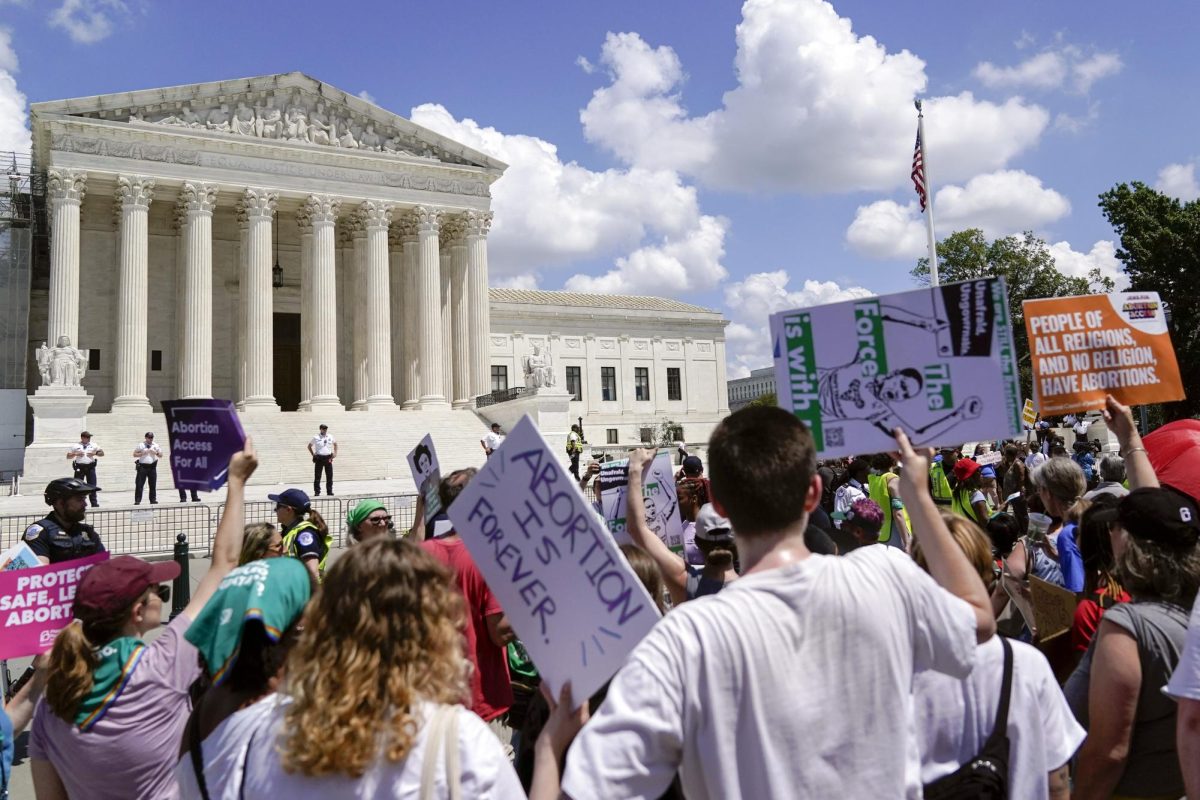Mehret Birru Talabi, director of UPMC Women’s and Reproductive Health Rheumatology Clinic, is conducting groundbreaking research on post-Roe v. Wade health care access.
The research group studying the health impacts of national abortion policy received a National Institutes of Health grant to fund their work on Sept. 1. The study, which began on Sept. 15, will examine the effects of the Dobbs decision on patients with chronic illness.
Sonya Borrero, professor in the Department of Medicine at Pitt and co-investigator of the Dobbs decision impacts study, said the project aims to focus on patients with chronic illness because there is a lack of research studying connections between abortion access and chronic illness.
“There have been anecdotal reports mainly through the news media and social media that some people are having difficulty accessing certain medications [or] are unable to obtain treatment for ectopic pregnancy, which is a nonviable pregnancy that, if untreated, can cause maternal death,” Talabi said. “However, anecdotal data are not adequate to study this health policy change, which underscores the need for research studies.”
Borrero outlined the three major aims of the project, the first of which involves travel for abortion care. Borrero said they hypothesized that patients with chronic medical conditions would have a harder time accessing abortion if they had to travel.
“We anticipate that [patient] health outcomes may be significantly worse than other groups when they can’t access abortion care because, a lot of times, their serious chronic illness puts them at very high risk for dangerous or risky pregnancies,” Borrero said.
The study was created after the reversal of the Dobbs decision which, according to researchers like Talabi, has limited abortion access for patients whose pregnancies may put their own health at risk, including those who suffer from autoimmune diseases, diabetes and hypertension as examples of these chronic diseases.
“Pregnancy termination has been an option for some people whose diseases severely worsen during pregnancy, or for people who inadvertently become pregnant while using medications that can cause fetal anomalies,” Talabi said.
Tamar Krishnamurti, an assistant professor of medicine and faculty member in the Center for Innovative Research on Gender Health Equity, said the proposal for the NIH grant was a joint effort between herself and the other researchers.
“We had to work quickly in bringing our interdisciplinary perspectives and methods together to plan this work,” Krishnamurti said. “It was a pleasure to do this because all of us are so passionate about improving women’s health services and equitable reproductive care access.”
Krishnamurti said she is in charge of crafting the surveys for this portion of the research project.
“I am working on designing surveys that we will be administering to physicians and to individuals in multiple states to understand how the overturning of Roe v. Wade has impacted health care provision and receipt,” Krishnamurti said.
The second aim of the study, according to Borrero, is to investigate how the Dobbs decision has influenced medical decision-making within the health care community.
“We expect, in states with abortion restrictions, that providers are going to be more likely to change their prescribing patterns or referral patterns for people with serious chronic medical conditions who are using what we call transgenic medications,” Borrero said. “These are medications that are not compatible with pregnancy but are often needed for disease control.”
The third and final aim involves collecting long-term public health data on the population, including maternal mortality rate and contraception prescriptions. Borrero said the research will continue for several years in order to observe the statistics since the reversal.
“We know in theory that, when more people are forced to have pregnancies and carry them to term, just by numbers alone, there are going to be more pregnancies and therefore more potential for deaths and serious complications from pregnancy,” Borrero said. “So we are anticipating that we are looking more broadly beyond serious chronic medical conditions.”
Borrero said although there is no empirical data yet for maternal mortality and morbidity rates, her colleague at the University of Colorado has modeled the effects of a national abortion ban, which would dramatically increase both the total mortality rate and the racial disparity in reproductive health care access.
Talabi said some possible impacts of her research include changes in health policy to support reproductive health care.
“I would hope that our results help to support new policies and health care interventions that can preserve people’s health and well-being in this new health policy environment,” Talabi said.
Borrero added that she hopes the study’s results help bring attention to telemedicine abortion opportunities and the way physicians approach health care for patients with chronic illness.
“We know that clinicians who are managing people with serious chronic illness don’t even ask [their patients] about their pregnancy preferences before starting some of these medications,” Borrero said. “So one approach is to have a really candid shared decision making conversation in which providers are asking people with pregnancy capacity.”
Krishnamurti added that she expects the study to impact our understanding of the links between policy and health care decisions, providing more opportunities for marginalized groups, such as patients with chronic illness, to access reproductive care.
“From the evidence we collect in this study, I hope we will be able to inform, and advocate for, policies that improve reproductive health equity,” Krishnamurti said.


